Binders in Refractory Concretes - Comparison (Cement Industry Focus)
Articles
Part 1: Overview of Binders in Refractory Concretes
Part 2: QuikTurn Vs. Rescobond Vs. EZ Est
Part 3: Laboratory Results of QuikTurn Vs. Rescobond Vs. EZ Est
Refractory concretes (castables and gun mixes) are overwhelming favorites for maintenance of refractory linings in North American cement plant preheaters and coolers. Refractory concretes provide high quality, durable linings that can reduce installation time especially when large volumes of refractory need to be installed.
Since their employment in the construction and maintenance of preheater linings dating back to the 1970’s, refractory concretes have traditionally contained calcium-aluminate cements as the binder. Similar to Portland cement, alumina cements are activated with water. These concretes typically feature good strength development within 24 hours of
installation, however, great care needs to be taken in drying out these linings, and frequently dry-outs for linings can extend several days.
It is often desirable to dress an existing lining during a maintenance outage by application of a refractory veneer using dry-gunite methods. Typically calcium aluminate-bonded concretes do not adhere well to existing linings, and veneer materials will more likely use a chemical binder, as chemically set refractories tend to have much greater adherence. Chemically-bonded monolithic refractories have an additional advantage of shorter drying times than alumina cement-bonded mixes.
A third technology has emerged for refractory concretes utilizing nano-particle sized colloidal silica (C/S) as a binder. This binder reduces the drying time for the refractory body as well as allows the potential for bonding to existing refractory.
The Nature of the Refractory Bonds
Alumina Cements
QuikTurn™
Like Portland cement, alumina cements contain several mineral phases that react with water. Only about a quarter of the tempering water is necessary to hydrate the alumina cement, the remainder is present in the mix just for flow. When mixed with water, calcium aluminate cements undergo hydration, in a manner similar to Portland cements. The hydrated cement phases precipitate out of the water solution and cause solidification of the mass. As the hydrate crystals form and grow, strength develops as the crystals interlace and bind together. During the initial dry-out, the majority of the water in the alumina cement-bonded concrete is the simple unbound water that evolves at or above the boiling point of water, 212°F (100°C). The hydration reaction products of alumina cements contain varied array of phases. The hydration waters of the phases CAH10, C2AH8 and C3AH6 evolve between 212°F and 752°F (400°C). In addition if the cement cures at a relatively low temperature, CAH10 and alumina hydrate, AH3, can form in a gel phase that has low permeability, which requires controlled lengthy dry-out procedures.In the year 2000, the QUIKTURN™ series of products were developed and brought to the market. QUIKTURN technology incorporated a variety of novel features including a very low cement content to permit the refractory body to sustain a quicker initial dry-out using process-generated heat. Typically QUIKTURN products have been employed to both reduce dry-out time and allow safe dry-outs in vessels where controlling a dry-out schedule is difficult.
Chemical Bonds
Rescobond
The chemical bond of choice in many alumina-silica refractories is the phosphate bond. Ultimately the reaction product of a phosphate binder and an alumina-bearing refractory is aluminum ortho-phosphate (AlPO4). Water serves as the solvent for the phosphate chemical and allows attachment of the phosphate anion to the aluminum cation. The chemical bond forms between 400°F (204°C) and 500°F (260°C). A hydrous phase results and is essentially dehydrated at about 950°F (530°C).The aluminum ortho-phosphate bond is strong, can be alkali resistant and is considered a non-crystalline bond. In practicality, chemically-bonded refractories show little susceptibility to dry-out issues. Resco’s series of chemically-bonded monolithic products bears the trade name RESCOBOND®

